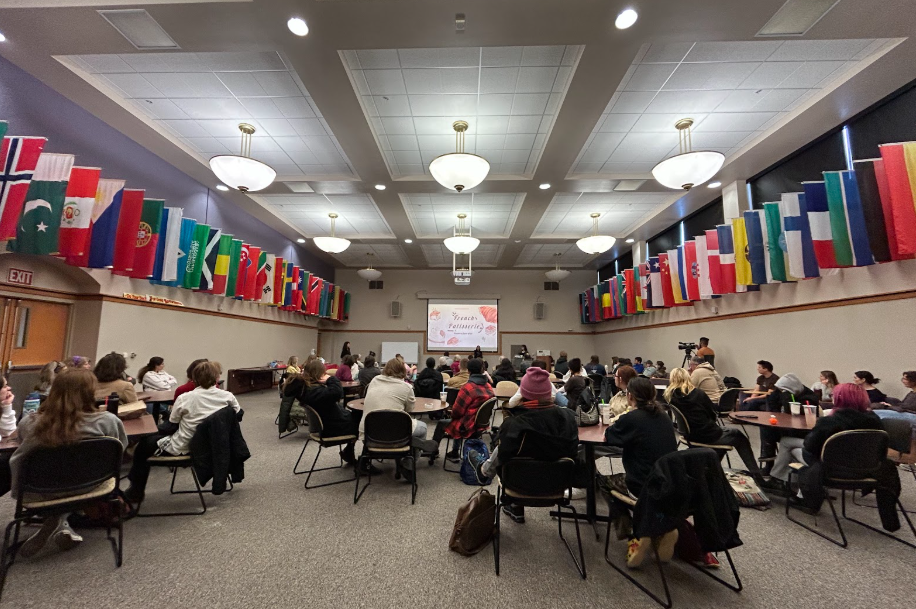The election has concluded, and the United States can start dealing with problems rearing their heads abroad: namely, a potentially nuclear Iran that the United States has been trying to broker a diplomatic solution with.
Before any decisions are made, Americans should educate themselves about the United States’ foreign policy and relationship with Iran.
The decline of U.S.-Iran relations started in 1979 after the Iranian Revolution. In November of 1979, Iranian students broke into the U.S. embassy in Iran, taking the 52 diplomats hostage.
Khomeini used this situation to humiliate former President Jimmy Carter, who tried to send helicopters in April of 1980 to rescue the hostages, which resulted in failure.
This triggered the start of tense relations between Iran and the United States.
During the Reagan administration in 1988, the USS Vincennes ventured into Iranian waters in pursuit of Iranian gunboats. The USS Vincennes, after a series of mistakes, shot down an Iranian civilian airliner with a surface-to-air missile.
The 290 Iranians killed in this incident caused the rift in relations to expand.
In 1989, Ali Khamenei became Ayatollah. Khamenei is the current Ayatollah residing over the Iranian government.
In the late 1990s, the president-elect of Iran was Mohammad Khatami.
It was during his term that relations between the United States and Iran had real hope, but because of political differences, his efforts to foster a new relationship with the United States was thwarted.
During President George W. Bush’s tenure in office, there were many missteps in the renewal of relations with Iran.
After the events of 9/11, 2001, the Iranian government condemned the terrorist attacks perpetrated on United States’ soil. Citizens of Iran held candlelight vigils in the streets of Tehran.
In 2001, Iran helped the coalition forces by persuading the Northern Alliance to arrange for a democratic framework of government for a post-Taliban government in Afghanistan. George W. Bush went on to include Iran in the “Axis of Evil,” along with Iraq and North Korea, both governments that Iran opposed.
For the past 33 years, the United States has lost opportunities to establish diplomatic ties with a country that occupies a large portion of the Middle East and one of the few Shia Islamic Republics in the world.
Iran is not a perfect example of an Islamic government, but they continue to share the spotlight on the world stage with other powerful countries.
The current Iranian President, Mahmoud Ahmadinejad, could be using this attention for his benefit. The economic sanctions placed upon the government of Iran have proved crippling, but it is unclear what Iran plans to do about the threats from Israel and the U.S.
Ayatollah Khamenei has resisted Ahmadinejad’s wishes to start talks with the United States to resolve the issue of the Iranian nuclear program.
The United States is opposed to Iran’s climb to power on the global stage because of our ties to Israel. Iran holds the West in disdain for their eroding morals and often refers to the United States as the “Great Satan.”
In an effort to create a diplomatic solution, it will take the education and enlightenment of both Iranians and Americans. The contention between our countries can be washed away.
Our two cultures share many of the same values; our futures are not set in stone. It is up to both Americans and Iranians to carve out the details for a better tomorrow and a peaceful solution.


























Registered Phlebotomy Technician • Mar 2, 2013 at 7:14 am
Hi there! I could have sworn I’ve visited this website before but after looking at some of the articles I realized it’s new to me.
Regardless, I’m definitely happy I stumbled upon it and I’ll be bookmarking it
and checking back regularly!
Radiographers • Jan 18, 2013 at 10:13 am
If you desire to increase your knowledge simply keep visiting this web site
and be updated with the newest gossip posted here.
Phlebotomy Tech • Jan 5, 2013 at 4:44 am
I’m really inspired with your writing skills as neatly as with the format in your blog. Is this a paid topic or did you customize it your self? Anyway stay up the excellent quality writing, it is rare to see a great weblog like this one these days..
ereader case • Nov 28, 2012 at 6:47 pm
Way cool! Some very valid points! I appreciate you writing this write-up and also the rest of the
website is extremely good.
Charlie • Nov 20, 2012 at 3:56 am
I have been checking out some of your stories and
it’s clever stuff. I will surely bookmark your blog.